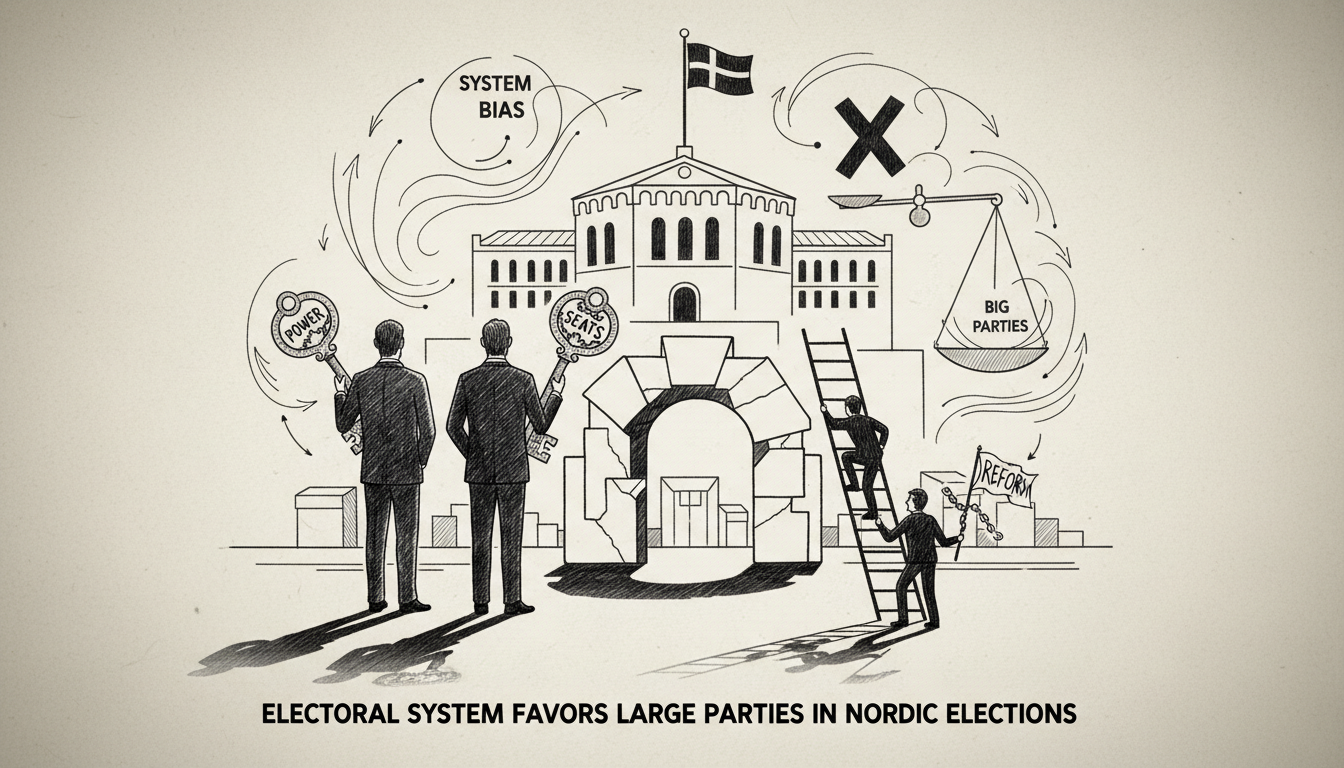The D'Hondt method has determined election outcomes across Nordic countries for more than a century. This mathematical formula decides who gets political seats when vote counts are final. The system will shape Tuesday's municipal and regional elections, giving certain parties distinct advantages.
Professor Ulrik Kjær, a local government researcher at the University of Southern Denmark, explains the fundamental bias. The D'Hondt method inherently favors larger parties, he confirms. The system works by dividing each party's votes by 1, 2, 3, and so on, creating different quotients. The first seat goes to the highest quotient, the next to the second highest, continuing until all seats are distributed.
Recent Danish parliamentary elections demonstrate the real-world impact. In the 2022 national election, blue parties and Moderates received approximately 68,000 more votes than red parties. Yet red parties secured a 90-seat majority because Social Democrats, as the largest party, gained an extra seat through the D'Hondt calculation.
Electoral alliances further complicate the picture. When parties form pre-election coalitions, they first distribute seats among the alliance using D'Hondt, then allocate those seats among member parties. A large party like Social Democrats gains even more advantage when forming alliances with smaller partners, Professor Kjær notes. The combined alliance becomes larger, then Social Democrats benefit again during internal seat distribution.
This raises obvious questions about why smaller parties join such arrangements. Kjær acknowledges it might not be strategically smart for them. The uncertainty of election outcomes drives these decisions, he suggests. Parties cannot know their exact vote percentages beforehand. Some alliances also form without dominant large parties.
The combination of electoral alliances and D'Hondt methodology has produced surprising results in recent Nordic local elections. During the 2021 municipal elections, several parties achieved absolute majorities in council chambers without reaching 50 percent of votes. This occurred in Lemvig, Høje-Taastrup, Lyngby-Taarbæk, Morsø, and Halsnæs municipalities.
Several parliamentary parties have proposed switching to the largest remainder method as an alternative. This system divides total votes by available seats to determine a seat price. Each party's votes get divided by this price and rounded down. Remaining seats then go to parties with the largest fractional remainders.
The persistence of D'Hondt reflects political power dynamics. Large parties repeatedly block reform attempts, Professor Kjær states. Danish People's Party and Socialist People's Party have tried multiple times to change the system. Larger parties refuse to listen to these proposals. The method effectively limits small party representation and influence, though opinions differ about whether this constitutes an advantage or drawback.
Some observers find numerous small parties complicate governance, Kjær notes. The current system creates stability through larger party dominance. This electoral mathematics story matters beyond political insiders. It affects how Nordic communities get represented and which voices shape local decisions. The system's continuity demonstrates how established powers maintain structural advantages while presenting them as neutral mathematical formulas.

